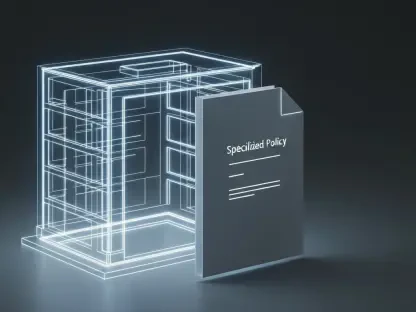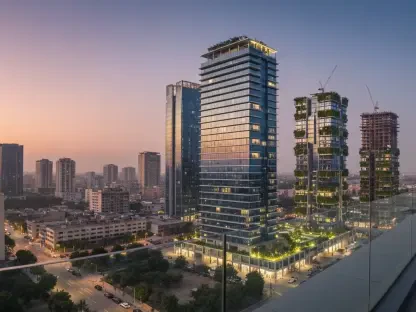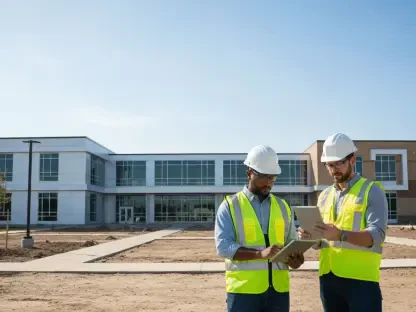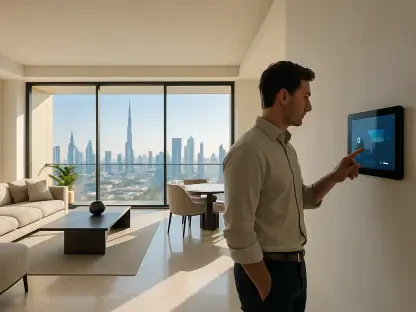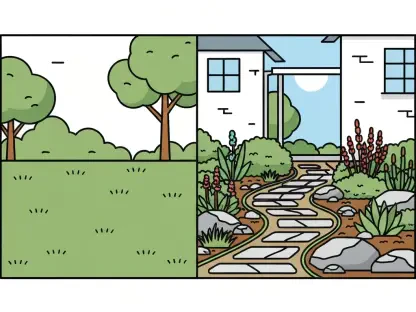Sustainability has become a defining factor in London’s commercial real estate landscape, compelling stakeholders to integrate eco-friendly practices not only to maintain competitiveness but also to adhere to stricter environmental regulations. This shift is driven by a focus on reducing the environmental footprint of real estate developments, fostering social responsibilities, and achieving economic sustainability. As landlords, developers, and investors navigate this transformative landscape, they are discovering that sustainability is not just an ethical choice but a necessary business strategy. The integration of sustainable practices is crucial in addressing environmental challenges, meeting evolving regulatory requirements, and catering to a market increasingly driven by conscious consumerism and corporate responsibility. Understanding the forces at play in the sustainability movement reveals a sector poised at a crossroads of innovation and responsibility, emphasizing the critical role of sustainability in shaping the future of commercial real estate.
Drivers of Sustainability
The fundamental drivers steering sustainability in the commercial real estate sector emphasize the significant environmental impact associated with traditional building processes. These impacts include some of the largest contributors to carbon emissions, extensive energy consumption, and generation of construction and operational waste. To tackle these issues, sustainable practices are taking center stage through advancements in design and technology. Buildings are now being equipped with energy-efficient designs, incorporating state-of-the-art insulation, advanced glazing, and intelligent building systems designed to optimize energy consumption. Renewable energy adoption is on the rise, with solar panels and wind energy systems becoming more prevalent, ensuring a move away from fossil fuel dependency and a drastic reduction in carbon emissions. Simultaneously, waste reduction strategies, such as modular construction and recycling programs during and post-construction, are being implemented to diminish the environmental footprint.
Inextricably linked to the environmental drive for sustainability is the need for regulatory compliance. The tightening of regulations related to building sustainability has become a powerful impetus for developers and investors who aim to meet stipulated standards. Energy Performance Certificates (EPCs) and the Building Research Establishment’s Environmental Assessment Method (BREEAM) are examples of frameworks pushing for adherence to environmental standards. These certifications ensure that buildings conform to efficient energy use, resource conservation, and sustainable construction practices. Compliance efforts are not without challenges; they demand ongoing education and resource allocation to stay abreast of evolving requirements. As policies continue to advance, the ability to navigate these legal landscapes effectively will distinguish successful enterprises from those unable to adapt.
Market Demand and Economic Benefits
Beyond regulatory pressures, there exists a palpable demand for sustainable building practices among investors and tenants. The market is witnessing a growing preference for buildings that align with sustainable values, a trend driven by increasing awareness and demand for eco-friendly business operations. As tenants prioritize sustainability in their corporate strategies, properties that meet these requirements are often able to command higher rents and attract premium tenants. This trend has, however, unearthed a mismatch between the availability of sustainable buildings and market demand, underlining the need for increased development and retrofitting of existing structures to bridge this gap. The market’s inclination towards sustainable real estate is further underscored by the reputational and operational benefits these developments offer to tenants, reinforcing the need for industry-wide adaptation.
Economically, the advantages of sustainable buildings extend beyond mere profitability to encompass long-term operational savings and enhanced asset value. Sustainable buildings, by virtue of their efficient energy use and lower waste production, typically have reduced operational costs. These savings make them attractive not only to occupants but also to investors looking for reliable, low-risk investment opportunities. High occupancy rates in these buildings translate to stable income streams, while access to green financing options, such as energy efficiency-linked loans, offers financial incentives for both new projects and significant refurbishments of existing developments. This tangible economic value, combined with the growing market demand and regulatory frameworks, paints a compelling picture for the continued advancement of sustainability in commercial real estate.
Challenges in Adopting Sustainable Practices
Despite the clear benefits, several challenges hinder the widespread adoption of sustainable practices within the commercial real estate sector. A significant barrier is the initial cost associated with integrating advanced sustainable technologies and achieving compliance with stringent standards. While the return on investment typically becomes evident through reduced energy and maintenance costs over time, the upfront financial commitment can be daunting for many developers. This fiscal challenge may deter some property owners, particularly those lacking adequate resources or access to capital markets that increasingly favor sustainable investments. Addressing this challenge involves not only initial investment but also continued engagement with evolving technologies and financing solutions that mitigate these upfront costs.
Navigating the complex regulatory landscape adds another layer of challenge for stakeholders in the sector. The ever-changing nature of sustainability requirements necessitates constant vigilance and flexibility in approach. Developers and property owners must not only remain informed but must also adapt their practices quickly to align with new standards. This ongoing need for education and resource investment to remain compliant and competitive requires a strategic approach by companies looking to thrive. As sustainability regulations become increasingly integral to policy decisions, the ability to predict and respond to these shifts becomes a critical success factor, ensuring businesses can turn compliance from a hurdle into an opportunity for distinction and growth.
Key Sustainable Practices and Technologies
A variety of innovative practices and cutting-edge technologies are at the forefront of the sustainability movement in London’s commercial real estate sector. Energy efficiency remains a pivotal aspect, with sophisticated insulation methods, advanced energy-efficient glazing, and the integration of smart building technologies redefining modern architecture. Smart building systems, for instance, allow real-time monitoring and optimization of energy use, enhancing both tenant comfort and operational efficiency. These technologies not only pave the way for energy conservation but also embody the sector’s commitment to reducing carbon footprints and promoting sustainable living environments.
In addition to energy efficiency, the incorporation of renewable energy sources into real estate developments is gaining momentum. Solar panels and other renewable technologies are increasingly integrated into design plans, offering viable alternatives to traditional energy sources and facilitating a substantial reduction in operational carbon footprints. The use of innovative materials, such as recycled or sustainably sourced construction materials, further contributes to this sustainable approach. Water conservation technologies, including greywater systems and rainwater harvesting, alongside waste reduction programs, complement these efforts. Collectively, these practices create a comprehensive approach to sustainable building, one that balances environmental stewardship with economic and social considerations.
The Future of Sustainability in Real Estate
In London, sustainability has become a pivotal aspect of commercial real estate, compelling stakeholders to integrate eco-conscious practices. This not only helps stay competitive but also aligns with heightened environmental regulations. The focus has shifted towards minimizing the ecological impact of real estate developments, fostering social responsibility, and ensuring economic sustainability. As landlords, developers, and investors navigate through this evolving landscape, they realize that embracing sustainability is not merely an ethical choice but an essential business strategy. Incorporating sustainable practices is critical to tackling environmental challenges, adhering to changing regulatory standards, and appealing to a market increasingly influenced by conscious consumerism and corporate responsibility. Recognizing the dynamics driving the sustainability movement reveals a sector poised at a crucial intersection of innovation and accountability, highlighting the essential role of sustainability in shaping the future of commercial real estate developments in London and beyond.


